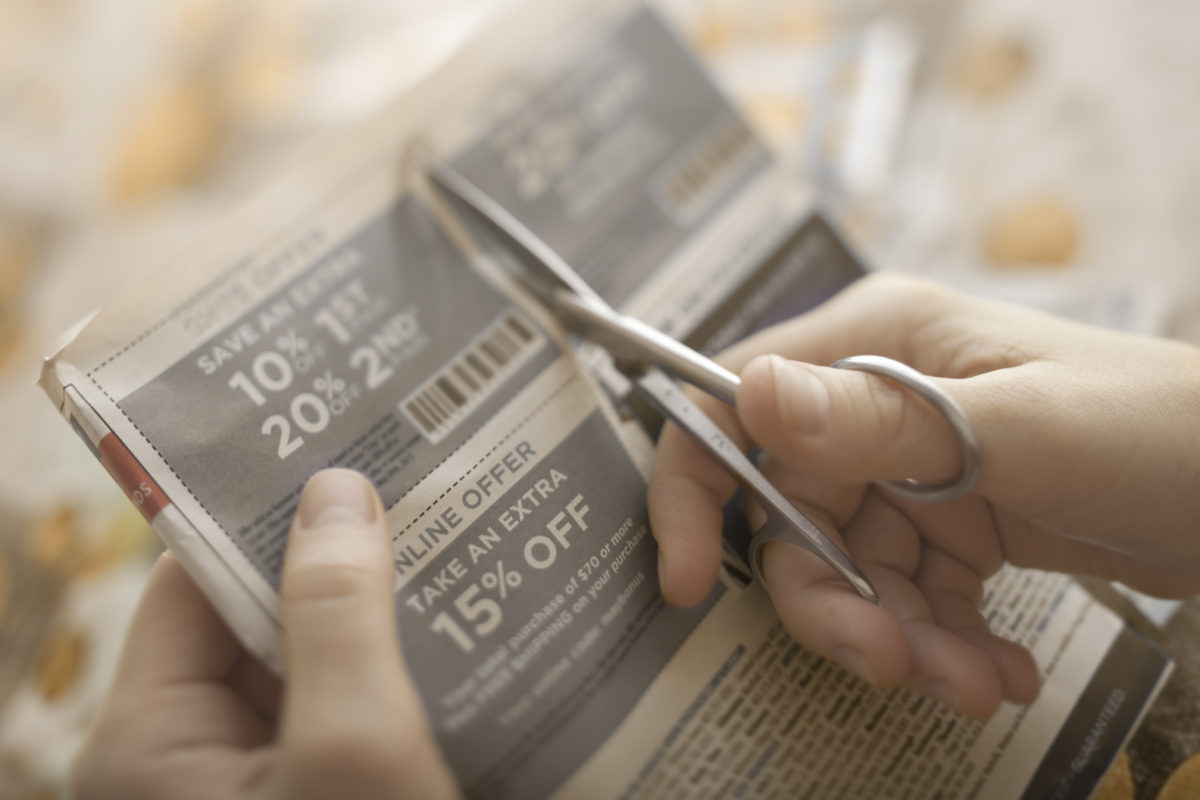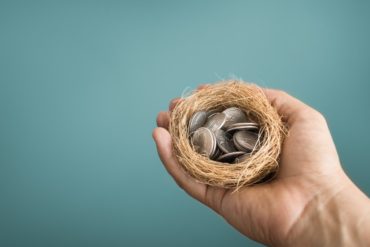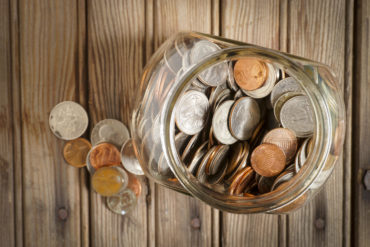The following post contains advice from Meredith Reagan, a former marketing specialist at Georgia United Credit Union. She’s a Scrabble enthusiast, pizza connoisseur and sucker for a good deal.
Couponing became a way of life for me shortly after I finished grad school and got my first “big girl” job. Confronted head-on with the reality of a student loan debt which actually exceeded my salary, yet still obligated to provide for myself and pay my bills in a timely fashion, my trusty scissors and I took to the weekly newspaper in search of the best deals.
People whisper about those couponers, you know. They’re “those people” who hold up the checkout line, the ones fumbling through the pockets of an accordion file for tiny snippets of paper professing to save their users $0.35 on BBQ sauce and $1 on laundry detergent. They’ve got closets and basements and guest rooms (oh my!) equipped with wall-to-wall shelving units, all loaded down with a ten-year supply of toothpaste, three hundred bottles of shampoo and enough paper products to stock a luxury hotel. They’re weird. In my case, you’re right— although I’m not sure how much of my being weird really has to do with couponing; that’s just the tip of the iceberg— but there’s no denying that a teensy bit of time and effort can have an enormous impact when it comes to helping you stretch your budget at the grocery store. Here’s how:
- Buy Seasonal – When selecting produce, pick what’s at season’s peak. Ripe, juicy strawberries in May; tangy blackberries in June; sweet, perfectly-chilled wedges of watermelon on a hot July day— you’ll truly notice a difference in the flavor and quality of seasonal produce. Your wallet will thank you, too. Produce that’s in season costs less.
- Buy on Sale – Many people avoid conventional grocery stores (Kroger, Publix, etc.) in favor of big-box brands like Wal-Mart because they perceive the former’s prices as “too expensive.” However, I’ve noticed that purchasing items on sale at these stores can result in your getting a comparable (sometimes even cheaper) deal on the items you use (and, in my opinion, often better quality and service).
 Bonus Tip: At Publix stores, if you won’t use two of an item that’s advertised as “Buy One, Get One Free,” just grab one. It will ring up at the register as half-price. You still get the deal. At Publix and Kroger, items priced at 10/$10 will ring up individually as $1. Don’t want to buy ten avocados and eat guacamole for the next two weeks? That’s fine! Just grab what you’ll use. The same goes for 2/$4 and similar deals.
Bonus Tip: At Publix stores, if you won’t use two of an item that’s advertised as “Buy One, Get One Free,” just grab one. It will ring up at the register as half-price. You still get the deal. At Publix and Kroger, items priced at 10/$10 will ring up individually as $1. Don’t want to buy ten avocados and eat guacamole for the next two weeks? That’s fine! Just grab what you’ll use. The same goes for 2/$4 and similar deals.
- Use Coupons – I can’t even tell you how many times I hear people complain, “They never have coupons for the stuff I use.” If you use toothpaste, soap, laundry detergent, coffee, toilet paper, diapers, paper towels, yogurt, dish detergent and a host of other grocery, household and personal care items— THERE ARE COUPONS FOR THE THINGS YOU USE. You might have to keep your eyes peeled, but they do exist. You can do a simple little software download to print coupons at home from sites like coupons.com, smartsource.com, and redplum.com. You can also clip coupons from the inserts in your Sunday newspaper. If there are certain brands or products you love and use often, sign up for their email lists. Many times, you’ll receive exclusive coupons in their e-newsletters!
- Get Organized – Nobody likes to be frazzled, especially in the checkout line. A little organization can help you save as much money as possible, remember to use any coupons and leave the store without forgetting anything (gone are the days of making that dreaded trip back to get that ONE lemon). I like to scope out my store’s ad, either the print version from my Sunday newspaper or an online version from the store’s website. I make a list of what I’m buying and how many, and if I have a coupon and how many. I gather my coupons (I like to use a small clip to hold them together), and then I comb the aisles until I’ve filled my cart. When I arrive at the register and hand over my coupons to the cashier, I feel much calmer knowing that I have everything I need and am ready to watch myself score some super savings! Using a list can also help keep you on track and avoid making impulse purchases.
- Know Your Limits – When you spy a really great deal, it’s easy (and sometimes smart!) to stock up on that item. But make sure you pay attention to expiration dates and compare those to how much of that item you or your family will use. For products like laundry detergent that don’t spoil, it’s a great idea to have a handy stockpile of bottles, especially if you can grab them at an unbeatable price! But having a fridge full of Greek yogurt that you purchased for less than $0.50 per container is only a steal of a deal if you’ll actually use them before they morph into science experiments. Typical sale cycles in the Southeast run about every 4-6 weeks, so keep an eye on the items you buy most often— there’s a good chance you’ll see them at a “stock up price” again soon.





Leave a Reply